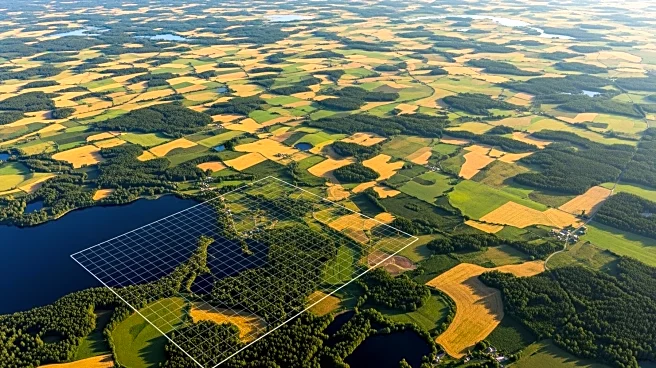What's Happening?
A recent study combines K-fold cross-validation with Bayesian hyperparameter optimization to improve the accuracy of land cover and land use classification. Utilizing the EuroSat dataset, the research employs the ResNet18 architecture to classify satellite
images into various land cover categories. The study highlights the effectiveness of data augmentation, gradient clipping, and early stopping techniques in enhancing model performance. By optimizing hyperparameters, the research achieves significant improvements in classification accuracy, demonstrating the potential of advanced machine learning methods in environmental monitoring.
Why It's Important?
Accurate land cover classification is essential for environmental monitoring and management, impacting areas such as agriculture, urban planning, and conservation. The use of advanced machine learning techniques to enhance classification accuracy can lead to more informed decision-making and resource allocation. By improving the precision of land cover classification, this research contributes to better understanding and management of natural and human-modified landscapes.
What's Next?
Future research may focus on expanding the application of these techniques to other environmental datasets and exploring their integration into real-time monitoring systems. The development of more sophisticated models and algorithms could further enhance classification accuracy and efficiency. Collaboration with environmental agencies and policymakers will be crucial to ensure the successful implementation of these technologies in practical settings.
Beyond the Headlines
The ethical implications of using AI in environmental monitoring, particularly in terms of data privacy and algorithm transparency, will need to be addressed. Ensuring that machine learning models are trained on diverse datasets to avoid biases is essential for equitable environmental outcomes. Long-term, the integration of AI into environmental monitoring could lead to a shift in how landscapes are managed and conserved, emphasizing data-driven decision-making and sustainable practices.













